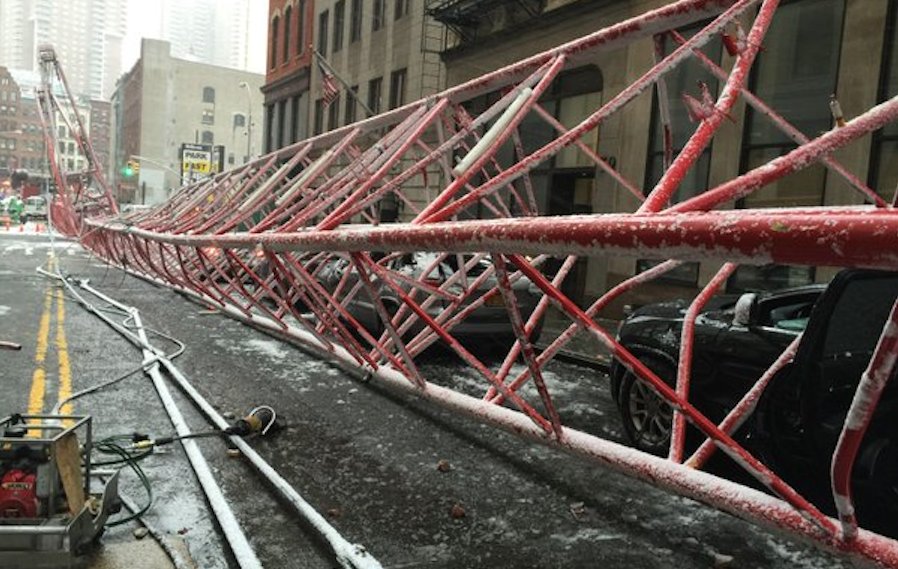The city has confirmed that the model was a Liebherr LR1300. Reporters at one of the city's press conferences asked if that meant the crane weighed 300 tons, or could lift that much; the answer is that in Liebherr's model numbers the "300" refers to the maximum hoist capacity under ideal conditions, meaning a short boom held at a high angle. It doesn't apply to the way the crane was rigged on Broadway and Worth Street, with a boom and a jib long enough to hoist HVAC gear to the top of a tall building. Here's the laydown zone (photo, FDNY):
Newsday did a good piece with interviews of crane experts on factors that investigators from the city's Department of Buildings will be checking ... things like, what operators should do to reduce the risk that a crane will overturn when lowering the boom and jib. And it may be that local wind-tunnel effects also played a role.
The proper procedure when weather-safing a long boom and jib is for the operator to run out the winch and set the hook block on the ground while the boom is still at a high angle.
Doing that eliminates a big weight that would otherwise be hanging at the end of a very long arm as the operator lowers the structure to the street. That's a lot of leverage.
Further, say the experts, the next smart practice is to lower the luffing jib (the smaller lattice structure at the end of the boom) into a vertical position, and only then lower the boom until the tip of the jib touches the street. The terminology makes more sense when looking at the diagram I did after the crane-overturning disaster last September in Saudi Arabia. The Liebherr that fell in KSA was a good deal bigger than the one that fell in New York, and it fell backward rather than forward, but from what I read, it had the same general rigging:
These two steps are particularly important when the crane lacks a trailer-mounted stack of counterweights.
Due to the fatality the city's Department of Investigations will issue a report in months to come.



No comments:
Post a Comment